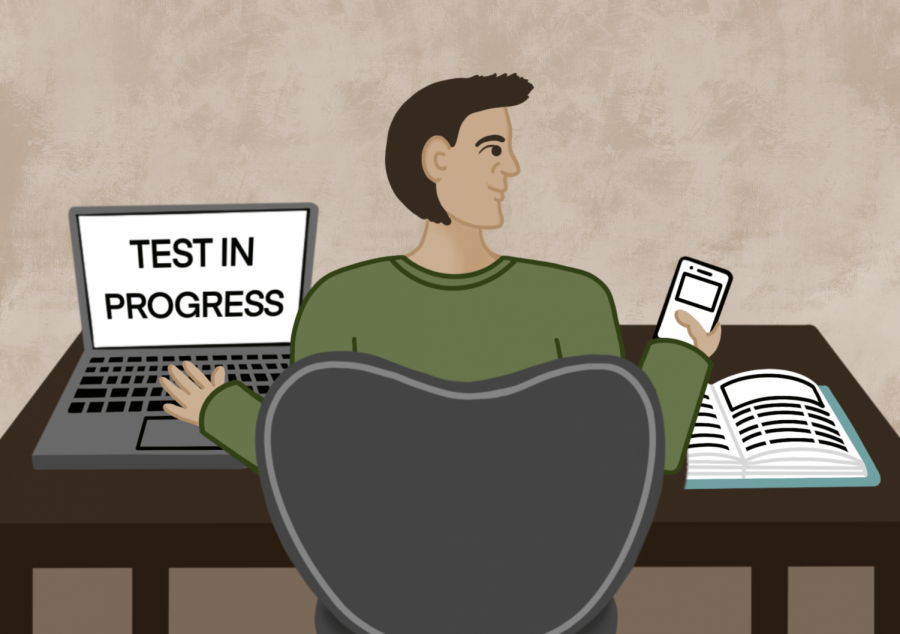Distance learning blurs lines of academic dishonesty
Newfound resources aid cheating
A lack of accountability caused by distanced learning allows for students to cheat on assignments and tests. Academic dishonesty is a growing concern for schools during the pandemic.
December 24, 2020
As we have strayed away from our traditional learning methods due to the pandemic, we have all had to adapt to using new tools and resources to keep up with school. However, with different, now accessible tools, come new opportunities for cheating.
Distance learning fosters cheating in a way that in-person schooling never could. In a traditional schooling environment, especially on test days, there are numerous, easily employable, anti-cheating methods that teachers have used. The primary issue with distance learning is that there are little to no anti-cheating alternatives, which are as convenient and effective as those in traditional learning environments. Whereas teachers were once able to survey a room and ensure no outside resources were being used, they are now limited by a student’s camera quality.
Even the tools available, such as remote proctoring software, aren’t enough. Prior to the pandemic, remote proctoring services, although used, had reached a form of stagnation, as their tools would always be inferior to in-person proctoring approaches. With the pandemic, this all changed; remote proctoring became the only option for many students. Yet, even with this sudden change, the issues with remote proctoring still remain; it is difficult to set up, expensive to manage, far less reliable than in-person proctoring. All of those issues don’t even touch on the fact that, in many cases, the software is only capable of monitoring a person’s primary device, meaning they could still be using another device to cheat.
Distance learning has also complicated which resources are acceptable to use in an exam. During in-person test taking, students are limited to what resources are provided to them. If a school enforces a no-phone policy, the students know that phones are not an acceptable resource. However, when every resource is accessible, it proves difficult for students to know which are acceptable.
Because of the uncertainty and limited software, the burden is no longer on the teacher to stop cheating, but rather on the students themselves to not cheat. While this pandemic may feel like a break from schooling, it is not. If and when we return to in-person learning, there is going to be a very clear divide between those who have been putting in the work, and those who haven’t.




